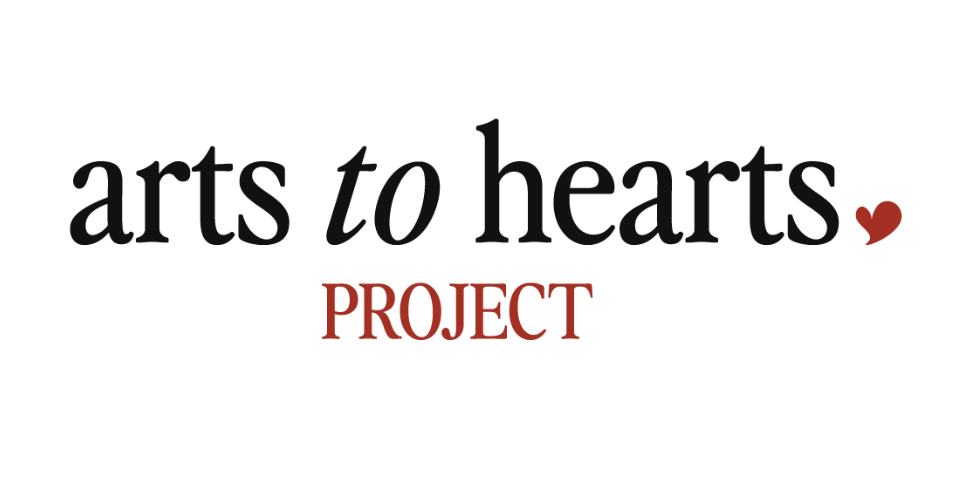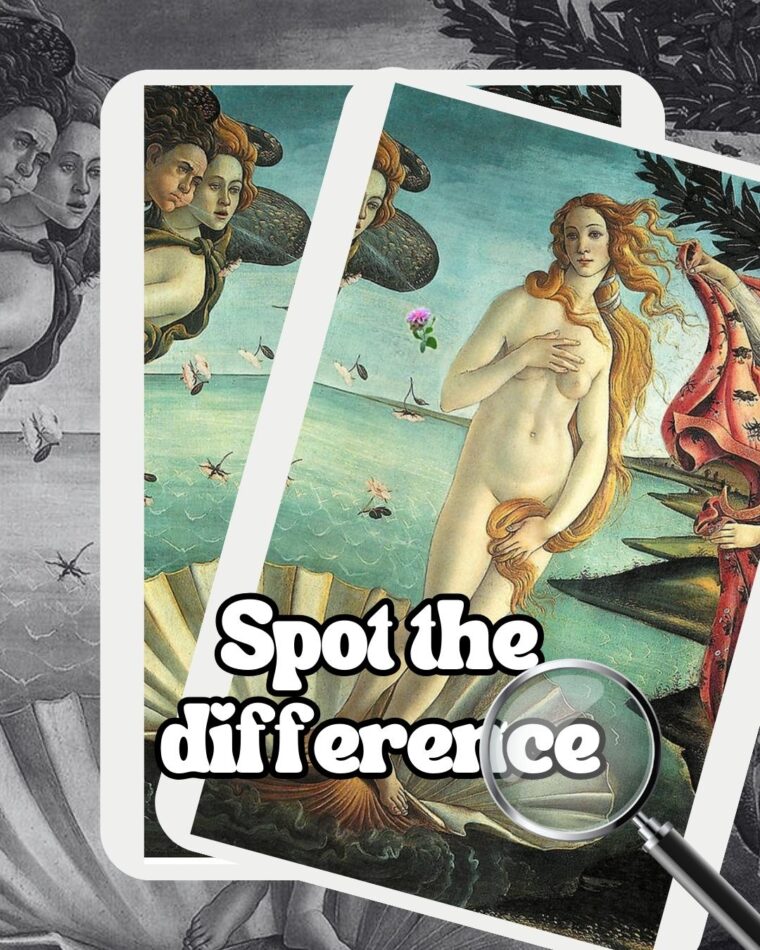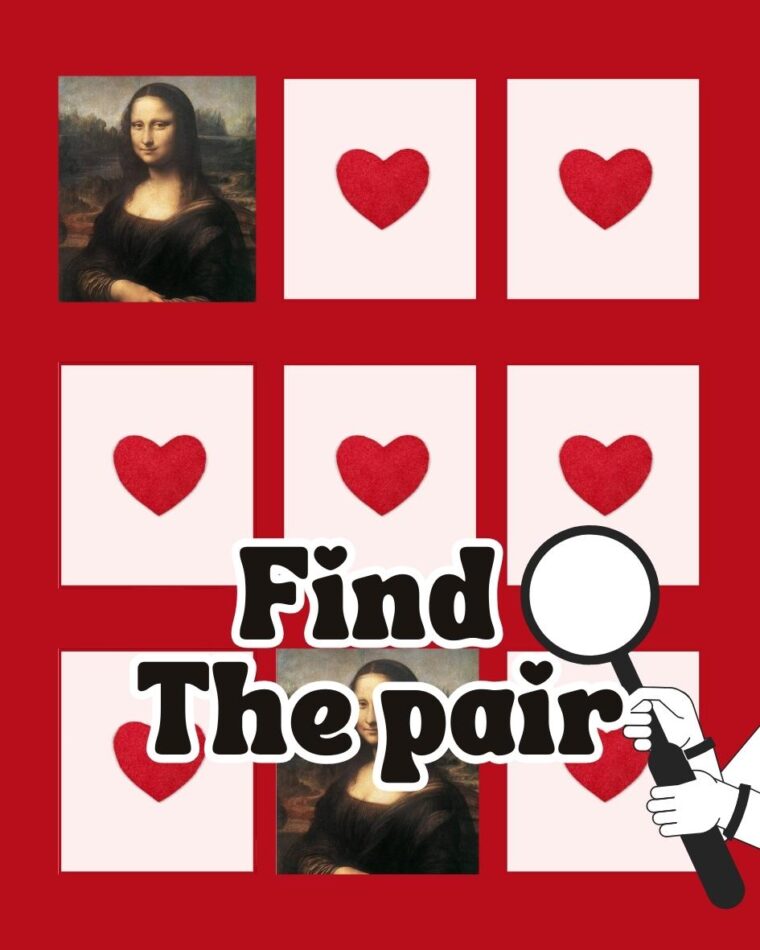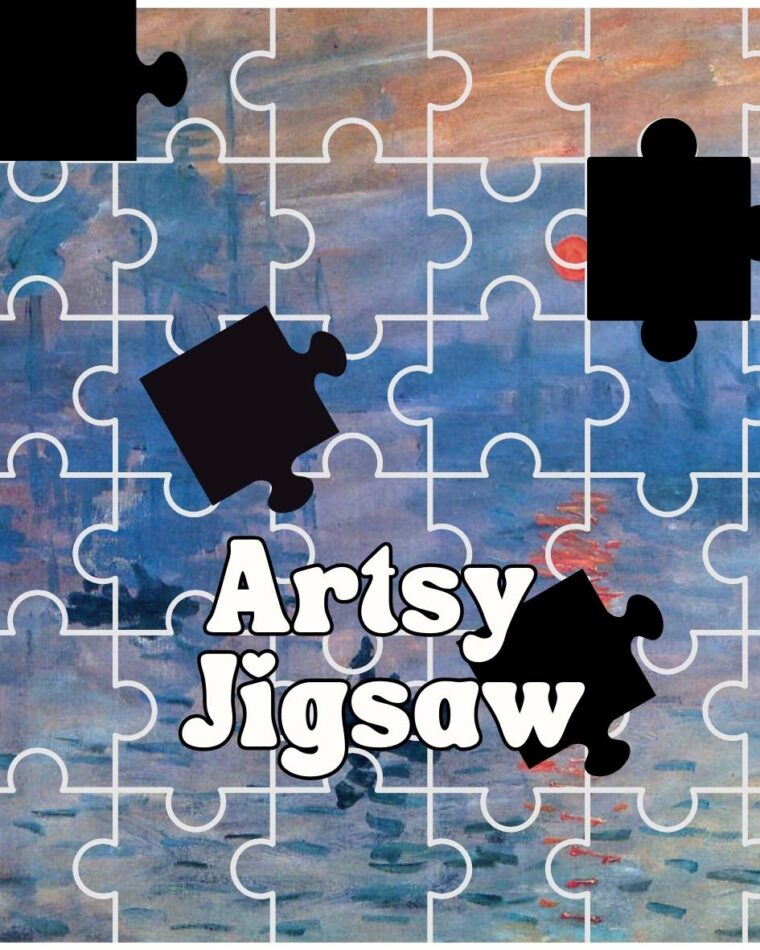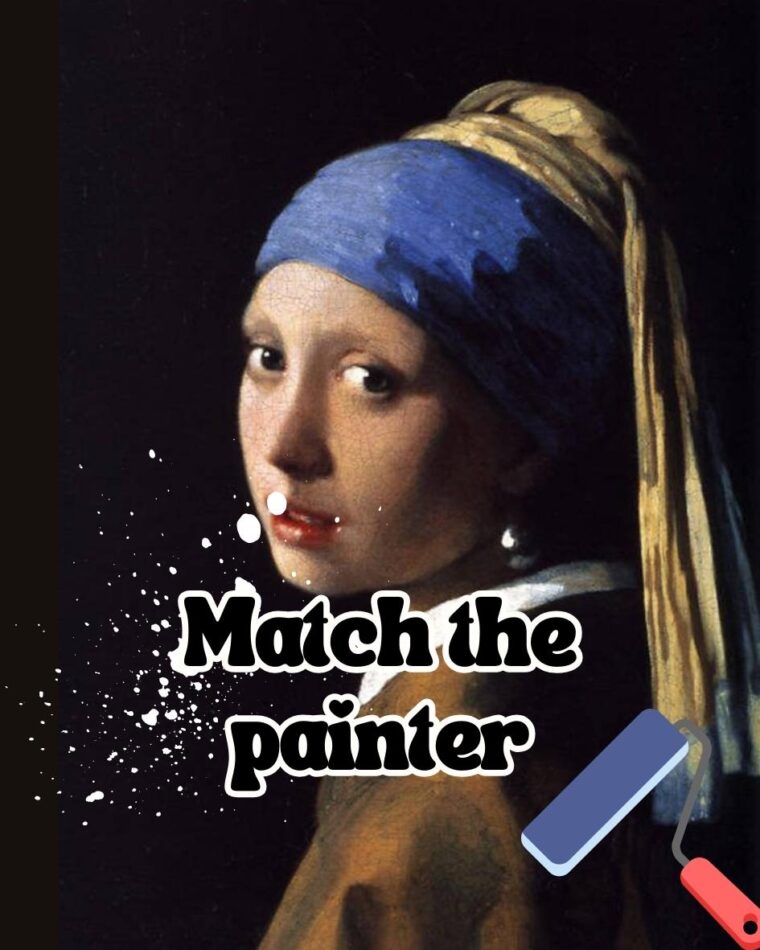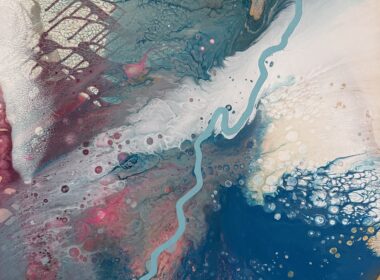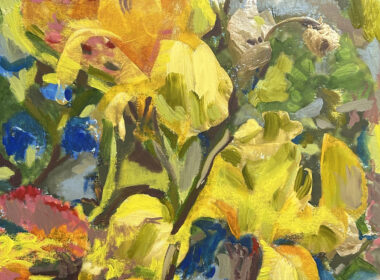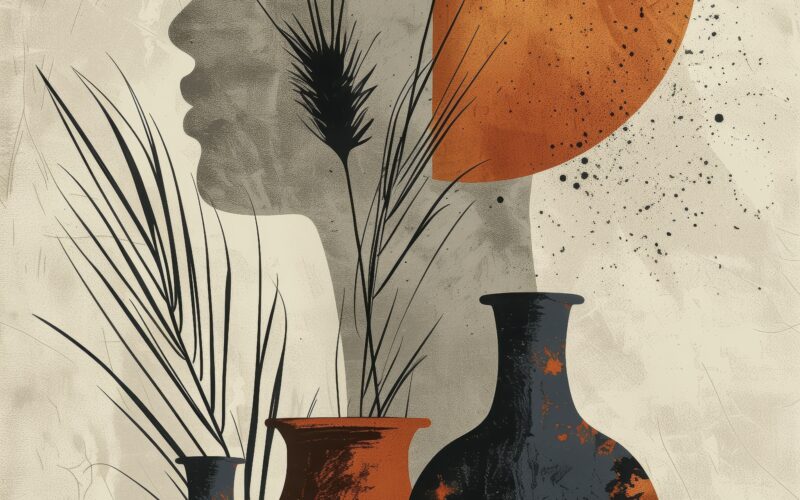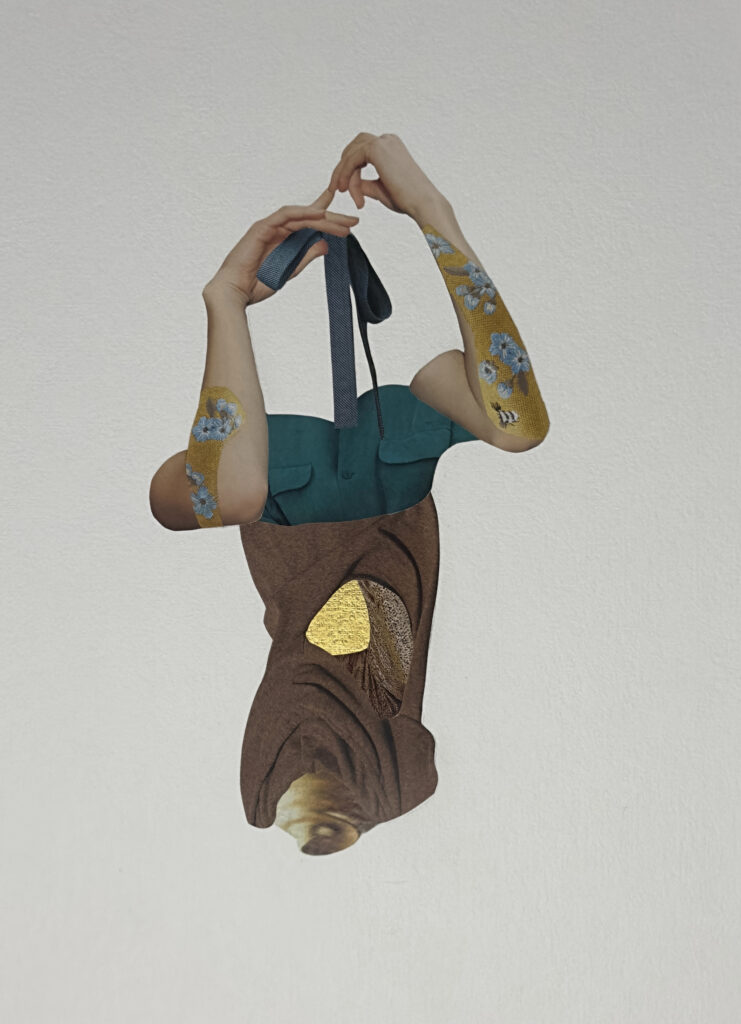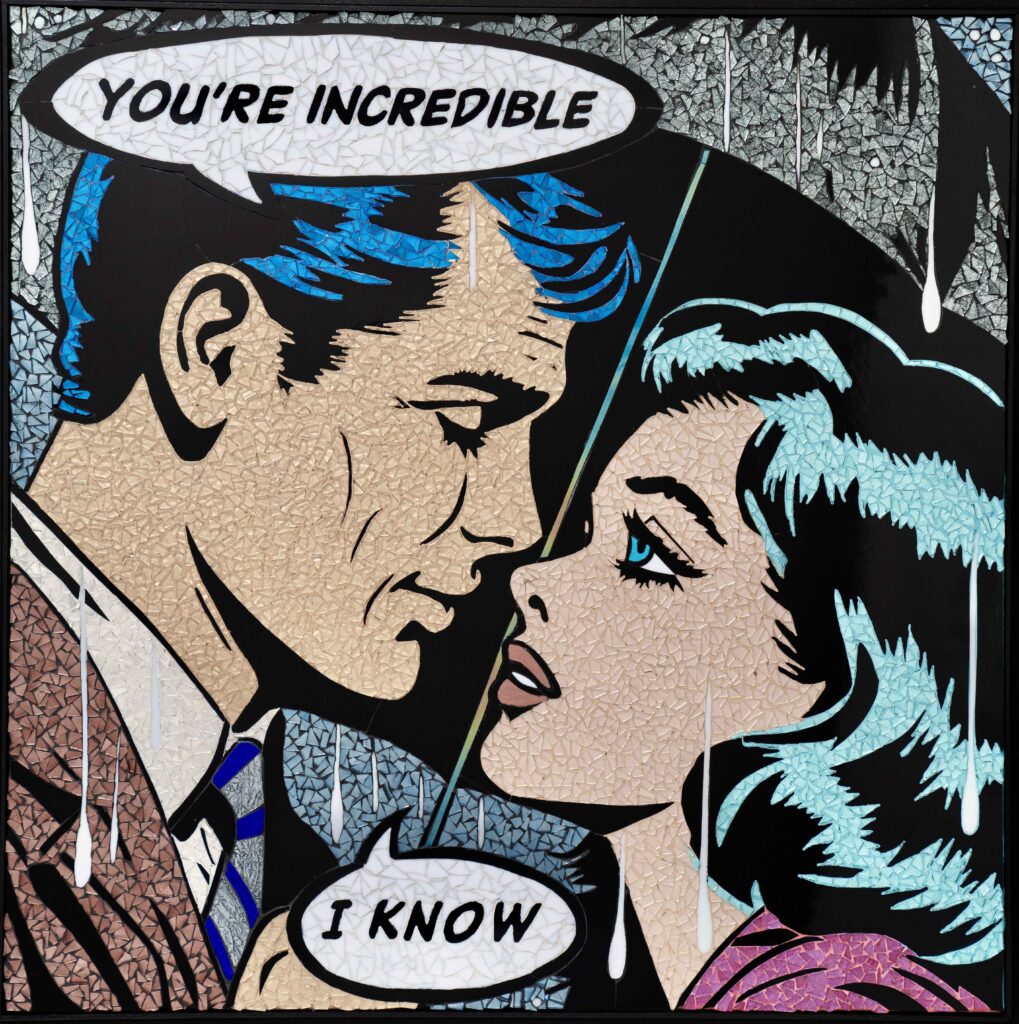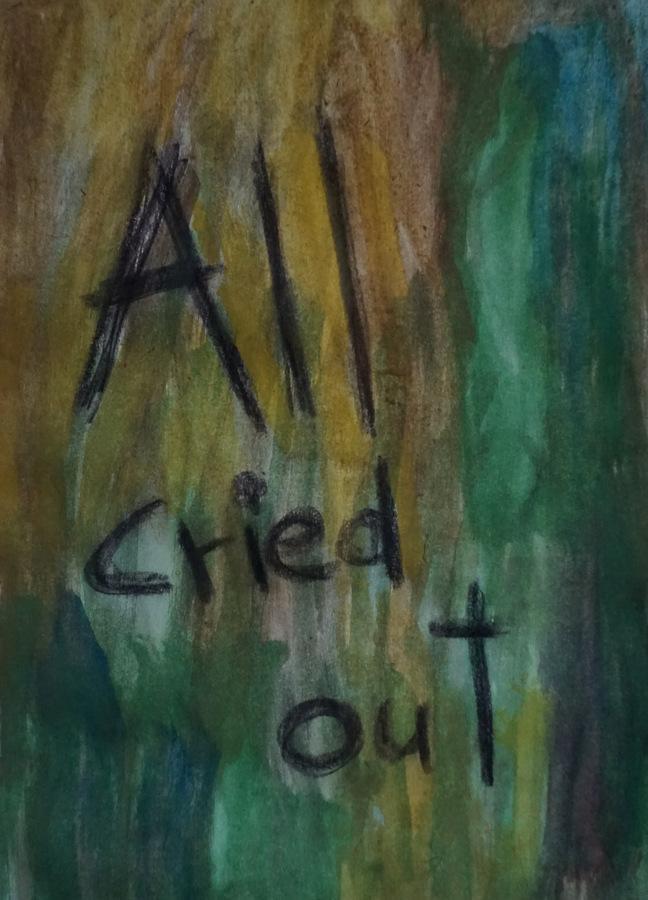
What Can Objects Do When They Stop Being Useful| Daeun Lim
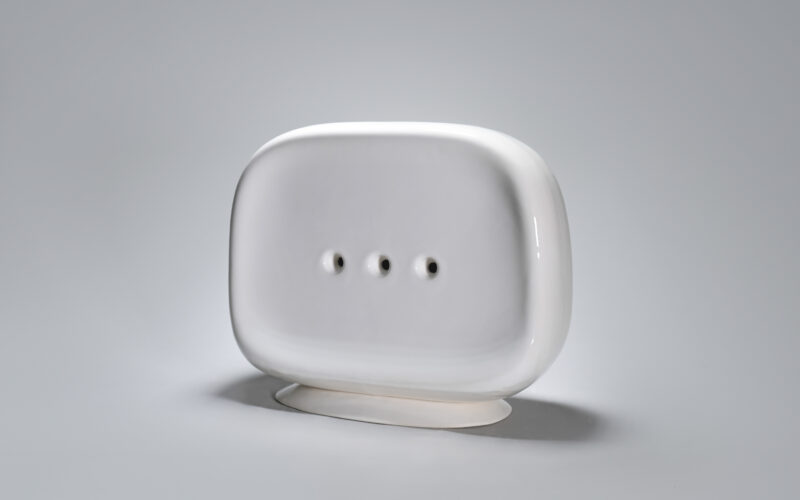


Daeun is a ceramic artist who mixes old-school clay techniques with modern digital tools to make objects that are both familiar and surprising.
In this interview on our Arts to hearts Project, she shares how her work plays with the idea of function, creating pieces that look useful but don’t always serve a clear purpose. Instead, they make you stop and think, or even smile. She talks about how moving between cultures and countries has shaped the way she sees the world and her materials, and how she uses digital modelling to bring a playful, industrial look to her clay creations.
We also learn about her recent solo show, “I would prefer not to”, which explored quiet resistance through objects that “prefer not to” be helpful. Daeun opens up about the joy of teaching in a fast-changing field and how artist residencies have reminded her that creativity often grows through community and conversation.
And guess what? Daeun Lim is one of the featured artists in our magazine, Issue#8, alongside many talented artists from around the world. Want a sneak peek? Grab your copy now from our shop and enjoy the fantastic artwork created by this global Community.
https://shop.artstoheartsproject.com/products/the-creative-process-book

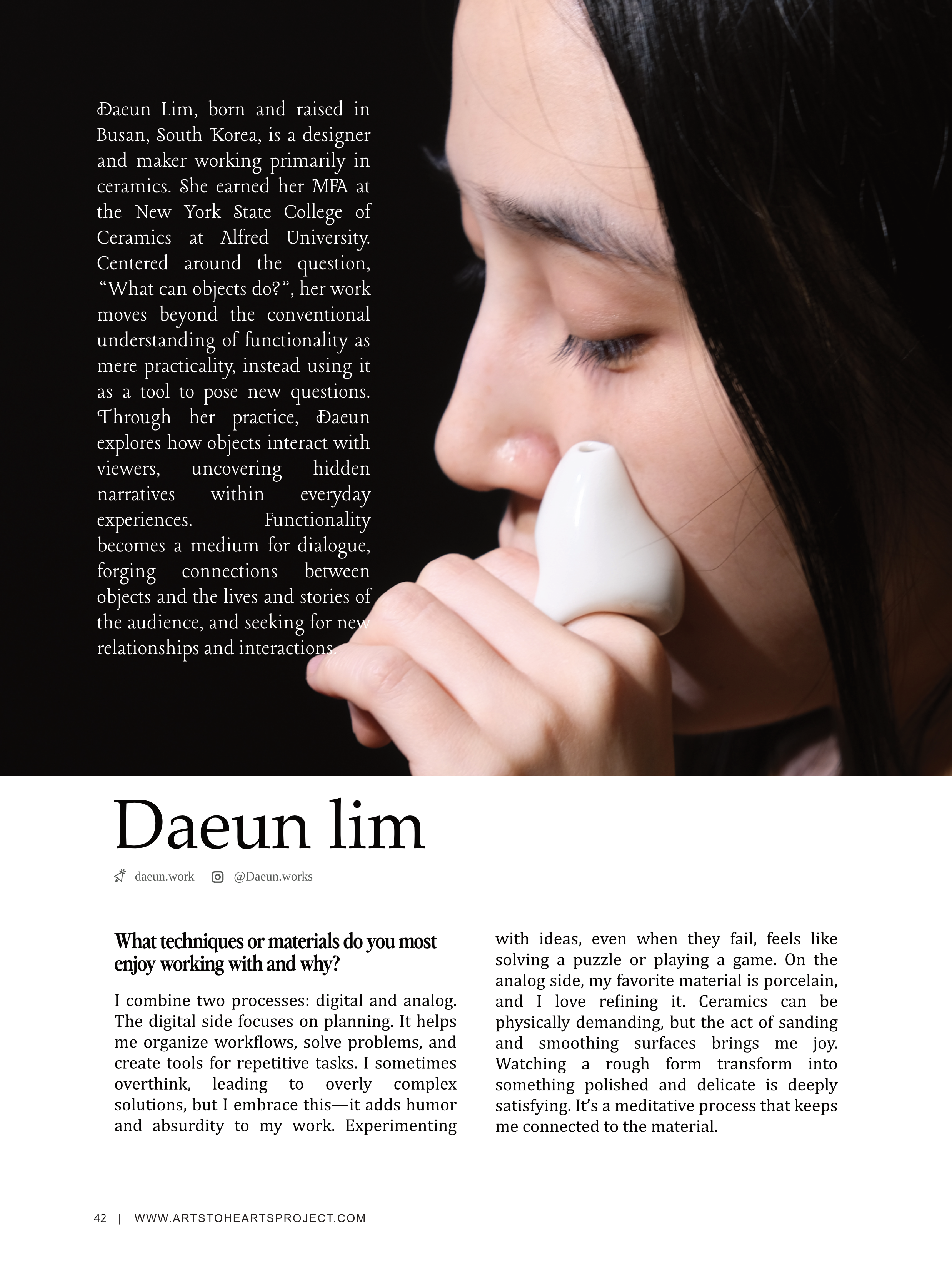
My work employs the aesthetics of utilitarian ceramics in order to challenge assumptions about functionality. My process and the resulting forms adopt the language of industry – sleek, white ceramics rendered with 3D modeling, printing, and mold-making – but subvert the expectation of utility. These materials and methods produce objects that are both recognizable and unfamiliar, whose apparent functionality ranges from ambiguous to hyper-specific, impractical, or exaggerated to absurdity. I explore objects’ potential beyond practical use. I design “function” in a way that pushes boundaries rather than reinforcing traditional utility, and reposition function as a question rather than an answer. Function in my work moves beyond the literal and becomes an analog for the human experience. Shaped by the identities given to me – a woman, a foreigner, and someone who continuously moves between different cultural and social expectations – these functions reflect ways of seeing, adapting, and existing within shifting contexts. My objects do not resist function; they digest it. Shaped by the questions I ask—and the questions they ask in return: “What can ‘objects’ do?” As a maker, I identify as a designer of misfit objects, creating a stage for them to play new roles, rather than embracing convention. Through their rejection of expectations, these objects are given agency. Their agency opens a terrain for renegotiation, adaptation, and new possibilities, detaching both objects and humans from prescribed roles.
1. Daeun, your work bridges traditional ceramics and digital fabrication—what first drew you to combining these two worlds?
Ceramics carries a vast history and the way of making is constantly evolving. To me, digital fabrication feels like a natural continuation of that evolution. I was drawn to digital tool’s potential because it offered different tools for asking the same age-old questions about form, function, and meaning.
I was thinking about objects that resist being helpful, resist being productive; objects that simply prefer not to participate in the usual expectations given to them.
Daeun Lim

2. In your recent solo show i would prefer not to, what ideas or emotions were you hoping to explore?
The title comes from Herman Melville’s Bartleby, the Scrivener, and like the character, the show was about quiet forms of resistance. I was thinking about objects that resist being helpful, resist being productive.;objects that simply prefer not to participate in the usual expectations given to them.

3. You’ve studied and shown work across Korea, the U.S., and beyond—how has that global experience shaped your creative voice?
It’s expanded my world both visually and conceptually. Being in different contexts helps me question assumptions I didn’t even know I had. It made me question and relearn about materials, utility, even how people make build relationship with the world. It’s made my work more layered and more curious.
4. How do you approach storytelling through form and material, especially when using digital tools like CNC or clay printing?
I actually don’t use clay printing. but I do use plastic printing and computer aided modeling. What interests me is not precision, but how these tools can help create a kind of disguise. My forms often mimic industrial products. That’s where the humor comes in. The digital helps sharpen that mimicry, and the clay materializes it.

Function in my work moves beyond the literal and becomes an analog for the human experience.
Daeun Lim
5. As an educator and artist, what’s the most rewarding part of teaching in such a rapidly evolving field?
Most of students coming to an art school look forward to having hands-on experience. They love getting their hands dirty. In that environment, I feel like a salesperson trying to convince people who are not interested in the digital tool that I am selling to give me a chance. But at the end, some of them find their own way into the technique and start to see its potential. And I would say when that is the most rewarding part.

6. You’ve held multiple residencies—how do those experiences feed into your studio practice and experimentation?
They’ve taught me that I can’t be an artist by myself. Or even who I want to be in general. The structure, the community, the shared conversations—all of that feeds back into my studio practice. Residencies keep me open, responsive, and willing to take risks.

Daeun’s work reminds us that not everything has to be useful to have meaning. By creating objects that look like they should do something—but don’t—she invites us to pause, smile, and think a little deeper. Her mix of clay and digital tools shows how tradition and technology can come together in surprising ways. Through this conversation, we see how questioning the rules—about art, identity, and even everyday objects—can lead to fresh, thoughtful, and playful ideas. To learn more about Daeun, click the following links to visit her profile.
Arts to Hearts Project is a global media, publishing, and education company for
Artists & Creatives: An international audience will see your work of art patrons, collectors, gallerists, and fellow artists. Access exclusive publishing opportunities and over 1,000 resources to grow your career and connect with like-minded creatives worldwide. Click here to learn about our open calls.

